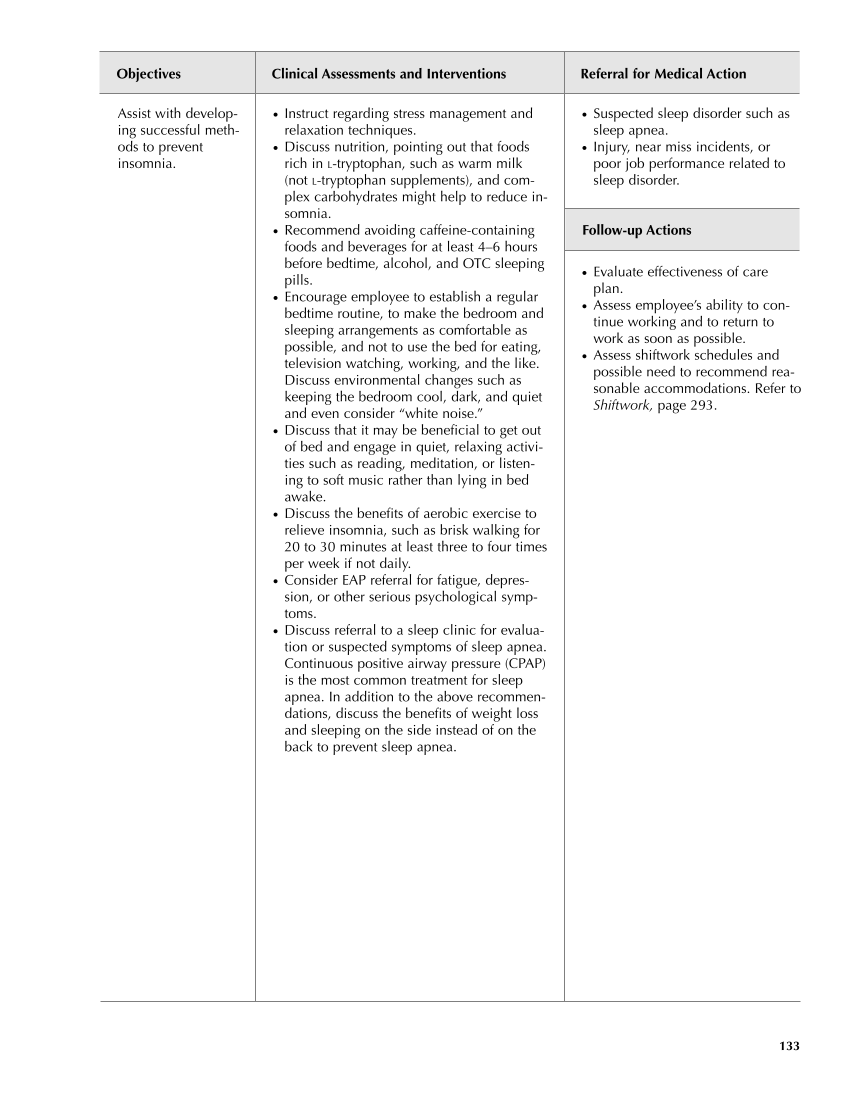133 ● Suspected sleep disorder such as sleep apnea. ● Injury, near miss incidents, or poor job performance related to sleep disorder. Follow-up Actions ● Evaluate effectiveness of care plan. ● Assess employee’s ability to con- tinue working and to return to work as soon as possible. ● Assess shiftwork schedules and possible need to recommend rea- sonable accommodations. Refer to Shiftwork, page 293. Objectives Clinical Assessments and Interventions Referral for Medical Action Assist with develop- ing successful meth- ods to prevent insomnia. ● Instruct regarding stress management and relaxation techniques. ● Discuss nutrition, pointing out that foods rich in L-tryptophan, such as warm milk (not L-tryptophan supplements), and com- plex carbohydrates might help to reduce in- somnia. ● Recommend avoiding caffeine-containing foods and beverages for at least 4–6 hours before bedtime, alcohol, and OTC sleeping pills. ● Encourage employee to establish a regular bedtime routine, to make the bedroom and sleeping arrangements as comfortable as possible, and not to use the bed for eating, television watching, working, and the like. Discuss environmental changes such as keeping the bedroom cool, dark, and quiet and even consider “white noise.” ● Discuss that it may be beneficial to get out of bed and engage in quiet, relaxing activi- ties such as reading, meditation, or listen- ing to soft music rather than lying in bed awake. ● Discuss the benefits of aerobic exercise to relieve insomnia, such as brisk walking for 20 to 30 minutes at least three to four times per week if not daily. ● Consider EAP referral for fatigue, depres- sion, or other serious psychological symp- toms. ● Discuss referral to a sleep clinic for evalua- tion or suspected symptoms of sleep apnea. Continuous positive airway pressure (CPAP) is the most common treatment for sleep apnea. In addition to the above recommen- dations, discuss the benefits of weight loss and sleeping on the side instead of on the back to prevent sleep apnea.
Purchased from OEM Press by (ge corporate access). (C) 2013 OEM Health Information, Inc. All rights reserved.












































































































































































































































































































































































































































